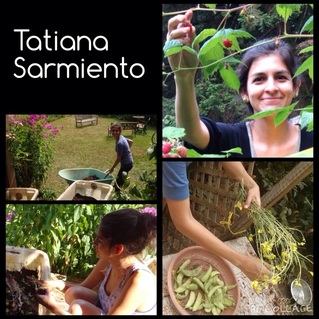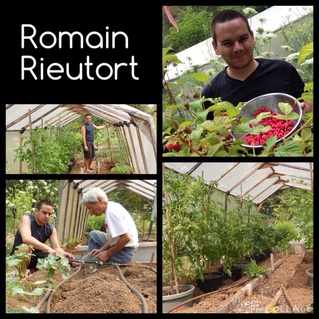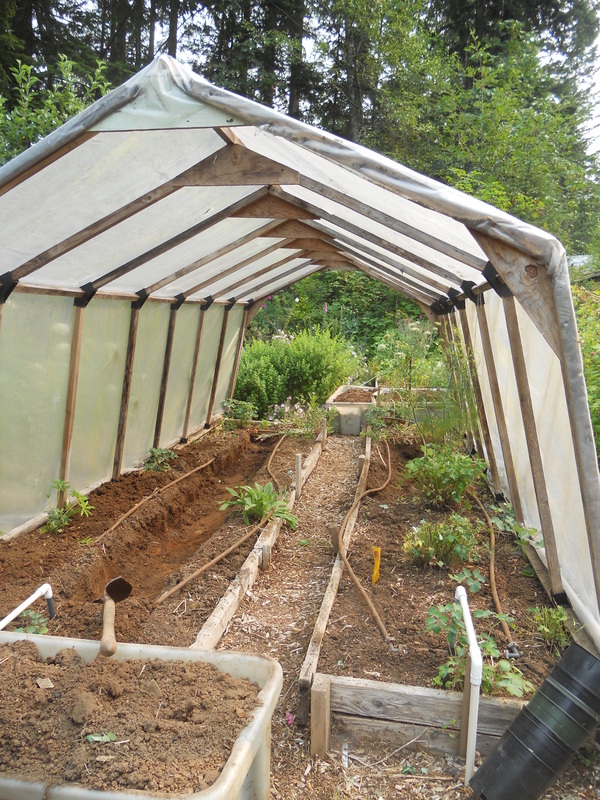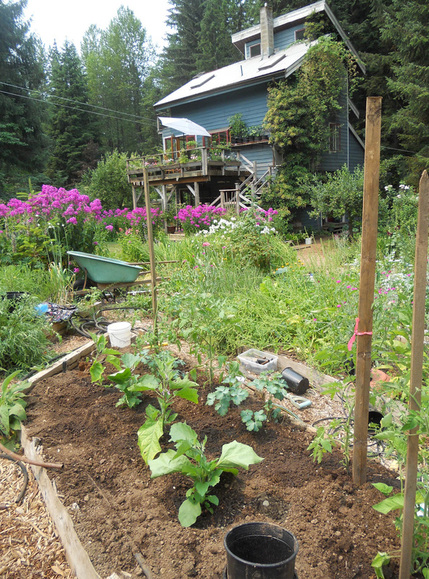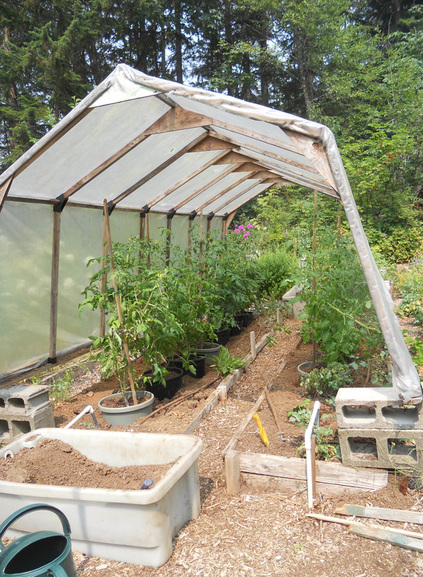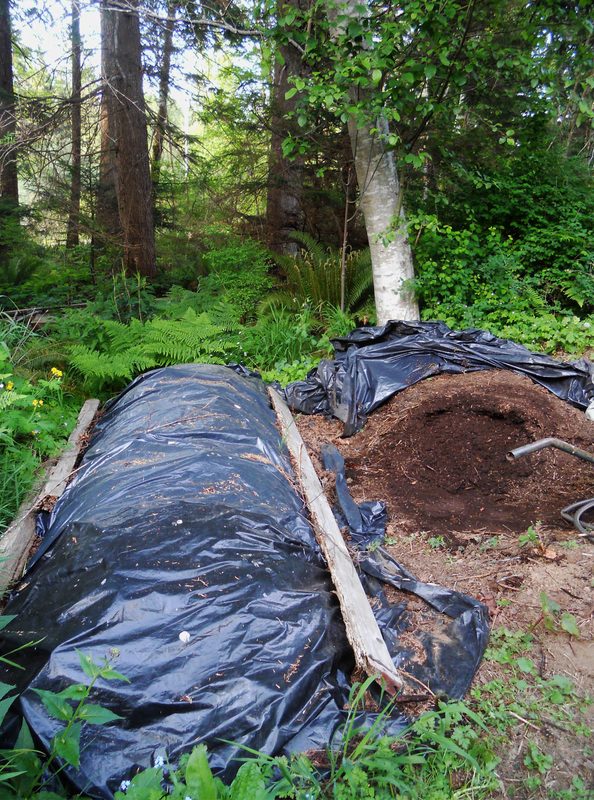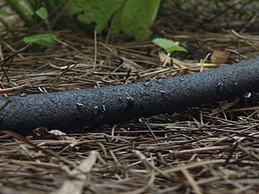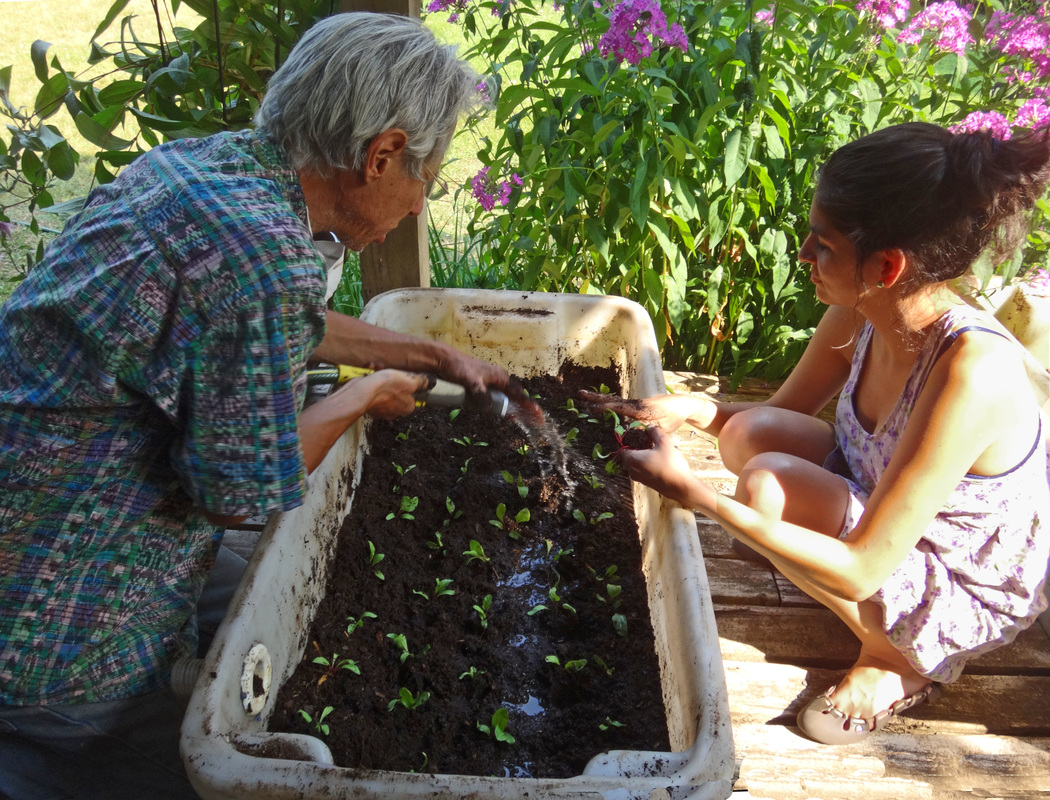.....and from the west
Greetings from the Comox Valley on Vancouver Island!
We are Tatiana and Romain, two volunteers from Montreal, province of Quebec, in Canada. We arrived on Vancouver Island a few days ago to help Peggy with her organic garden here in Merville.
Greetings from the Comox Valley on Vancouver Island!
We are Tatiana and Romain, two volunteers from Montreal, province of Quebec, in Canada. We arrived on Vancouver Island a few days ago to help Peggy with her organic garden here in Merville.
We went to the university and we live in a big city but we are really excited to work in the garden!
| Brinjal (eggplant), tomatoes and chili and some new drip irrigation lines have been planted in this raised bed. | To make compost, put layers of local plant materials like dried leaves, green grass cuttings, weeds, manure, straw, shredded newspaper, etc. into piles 3' wide and about 12' long. Water the layers to keep them moist - but not wet. While adding layers of material, a liquid "slurry" of cow manure and water can be applied. When the piles are 3 to 4 feet in height, they are covered to protect earthworms and various microorganisms in the compost from sun and too much rain. After a few weeks, the piles are turned to introduce air and loosen materials. Compost should be ready in 2 to 3 months. |
Gently watering beet seedlings Ron and Tatiana transplanted into a container of finished compost. We're doing this because this year's unusually hot and dry weather, and the lack of water available for irrigation are making it difficult to get a good germination rate. Hoping for a crop of beets by September....
